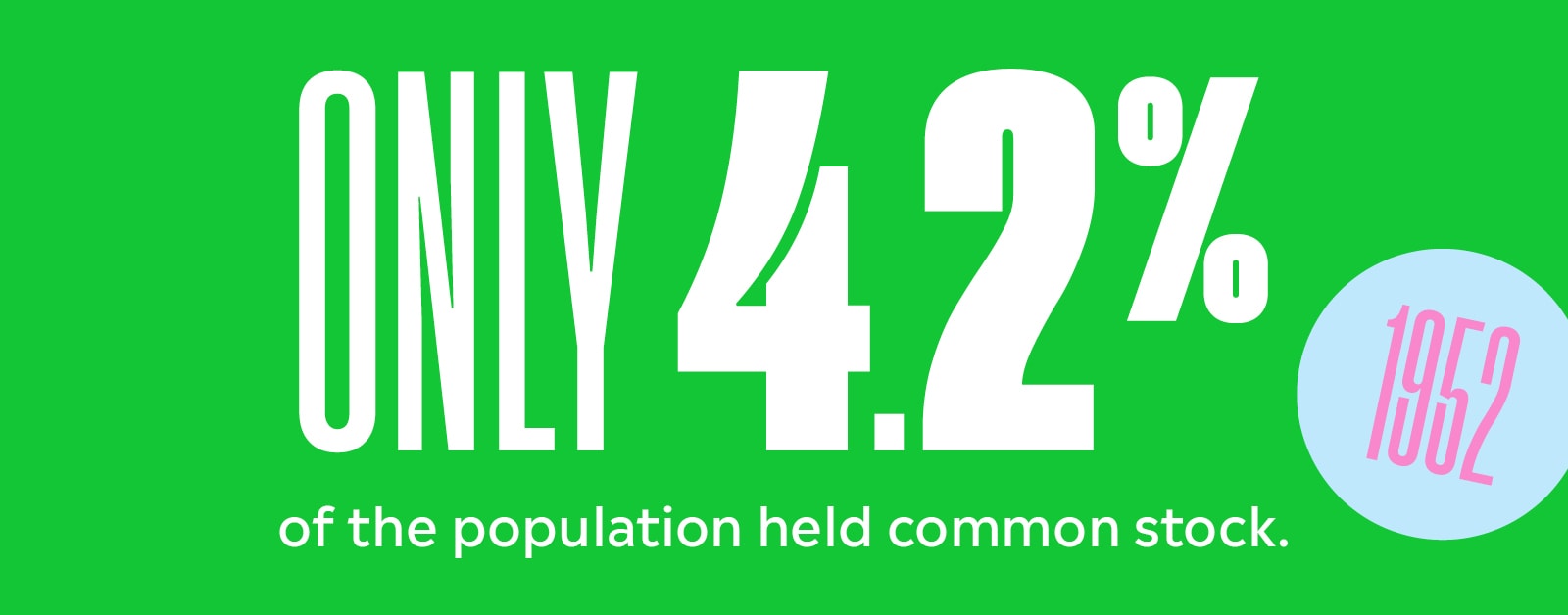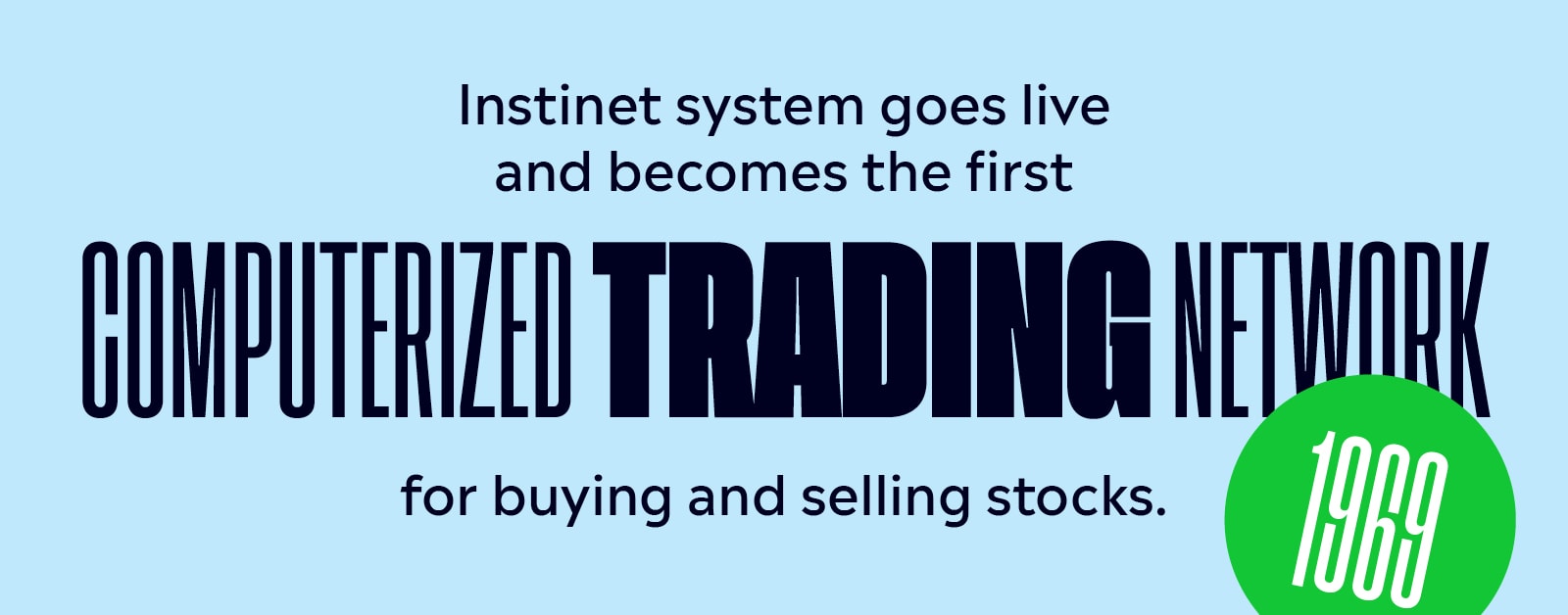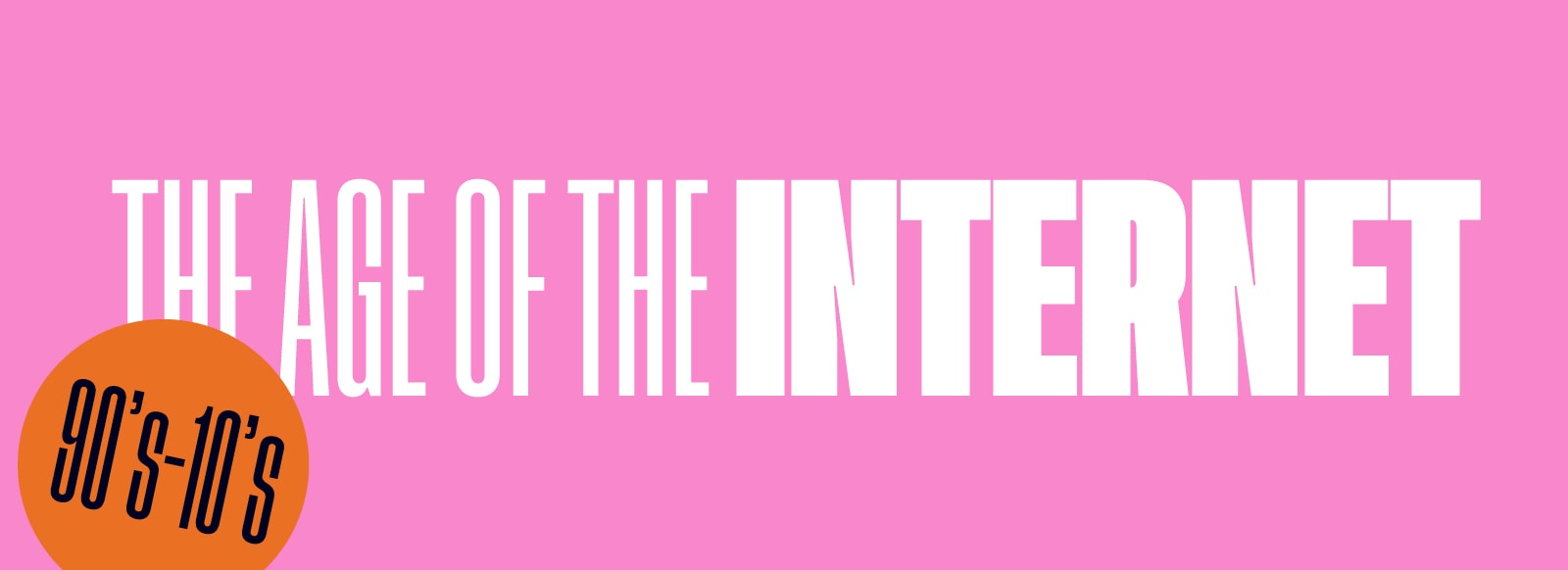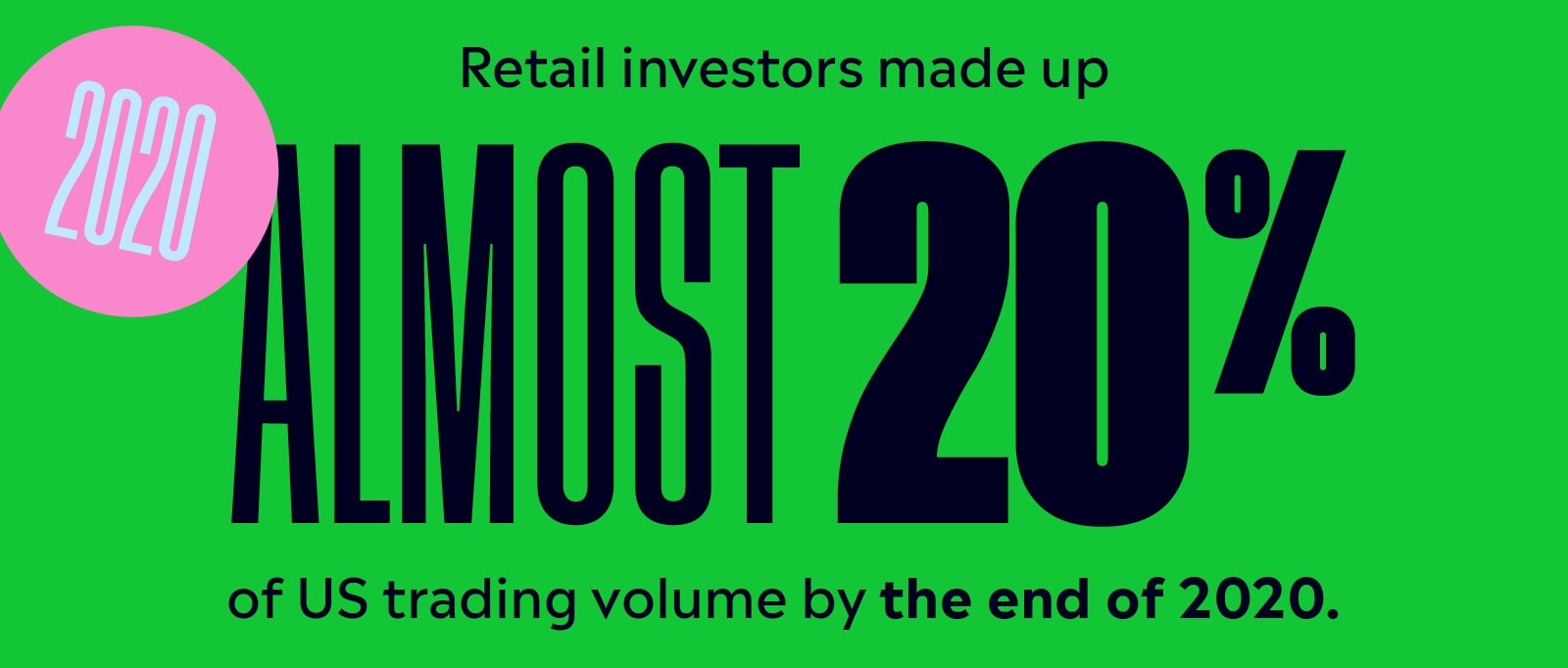Today, buying stock and other assets is more inclusive than ever before. But how did we get here?
It goes without saying, but the internet has made everything better.
Perhaps that’s bold, but it’s hard to deny the digital revolution’s impact on everyday life, from how information is shared to the speed of communicating, transacting, and the like.
While it applies to many aspects of society, it seems to fly under the radar just how transformative digital technology has been for investing. As history will show you, there were significant events (not only technological, but political) that molded the modern-day investor. In addition, changes in societal behavior (namely social media) inevitably paved the way for social investing.
Before getting to all that, let’s take “stock” of how we got here.
Old-Timey Trading
Way back when — we’re talking late 18th century all the way through the mid 20th century — investing in stocks was almost entirely reserved for men wearing monocles and top hats. No, we’re not talking about the Monopoly guy, but pretty close.
To put it bluntly, investing took money. Specifically, the commission rates charged by brokers created a pretty steep barrier to entry for the middle-class American citizen. On top of that, the manual execution of a stock trade was painfully slow. Compounded by the stock stigma created by the Great Depression, by 1952, only 6.5 million Americans (4.2% of the population) held common stock.

Technology and Regulation Redefine Wall Street
Over a decade later, in the middle of a market crash, one of the first significant technological advancements for investing was introduced. The Instinet system went live in December 1969, becoming the first computerized trading network for buying and selling stocks. The technology really took off by the 1980s, automating the process of placing stock orders and removing the need for manual trading on an exchange floor or calling a broker over the phone.

As investing became easier and faster, it became more open to the general public. The 1970s brought more change, including the Employment Retirement Income Security Act (ERISA), which aimed to protect employee benefits by allowing for tax-advantaged 401(k)s. The emergence of index and mutual funds (i.e., diversified stock portfolios) further pushed everyday consumers into the market by incentivizing them through retirement and other savings plans.
By the 1990s, the stock market had fully recovered from the market crash of 1987 (aka Black Monday) and reformed, thanks to regulatory changes like trading halts and greater Federal Reserve intervention. At the same time, the emergence of the world wide web ― and later, mobile devices ― was set to revolutionize stock trading like never before.
Welcome, You’ve Got… Stock
By the time the internet was an actual thing people used (with regularity and efficiency) in the late 90s, it became a place to not only trade stocks, but learn about them as well. The “information superhighway” was just that for many consumers curious about investing, as AOL chat forums became the early impetus for groups like WallStreetBets on Reddit. People could join to discuss a Fortune 500 company’s quarterly report or the next hyped tech IPO.

At the same time, legislative action continued to redefine the investing landscape. One example of this would be the Taxpayer Relief Act of 1997, which cut the tax rate for capital gains and further incentivized those who sought to profit from stocks. While the first decade of the 21st century was marred by several dings to the market (e.g., the Dotcom bubble burst, 9/11, and the Global Financial Crisis of 2008), technology was moving at a rapid pace that would soon put every investing need in the palm of your hand.
By the time the 2010s rolled around, investing apps started to proliferate and made buying and selling stock as easy as liking a Facebook post or swiping right on a dating service. Well, not quite that easy, but it was clear the stock market was about to reach a much wider audience.
The Social Investor
There’s few things the stock market is less prepared for than a global pandemic, especially one that shuts down economies faster than the flip of a switch. Alas, COVID-19 had major ramifications on all aspects of society, and investing was no stranger.
With hoards of the American population on lockdown and looking for something to do, investing interest, both for traditional stocks and the emerging crypto market, began to increase — so much so that retail investors made up almost 20% of US trading volume by year’s end, double the amount from ten years prior.

If anything, the pandemic emphasized the weight of social media at times of isolation and despair, giving people a place to connect and find common ground. The social investing community takes the individual out of individual investor, whether it’s people sharing stock tips on social sites like Twitter and Reddit, or a platform like eToro, where millions of users can access tools and other resources (e.g., following the moves of top crypto investors) to invest more savvily.
Indeed, the everyday investor has evolved a great deal. And as social investing shows, it’s not just about the ability to day trade from your phone and have access to every meaningful market with a tap or a scroll. It’s about being a part of a community that looks out for each other, promoting financial wellness through well-informed investing strategies.

